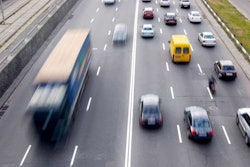The U.S. Department of Transportation gave the go-ahead to begin construction to replace the Milton-Madison Bridge (U.S. 421) after it finalized an agreement on a $20 million American Recovery and Reinvestment Act of 2009 (Recovery Act) grant awarded earlier this year.
The bridge is a vital link between two economically distressed communities – Milton, Ky., and Madison, Ind. If taken out of service, it would create tremendous hardships for residents on both sides of the river in detours and increased commuting costs.
“Recovery Act dollars are helping the communities of Milton and Madison, as they are helping communities all over America,” says U.S. Transportation Secretary Ray LaHood. “Replacing the Milton-Madison Bridge will create jobs, bring these communities closer together and make them better places in which to live.”
The $20 million grant is from the U.S. Department of Transportation TIGER (Transportation Investment Generating Economic Recovery) program, included in the Recovery Act, to promote innovative multimodal and multijurisdictional transportation projects that provide significant economic and environmental benefits to an entire metropolitan area, region or the nation.
Recovery Act funds will go toward the total replacement cost of the Milton-Madison Bridge. Total replacement is estimated at $129.6 million. USDOT signed the grant agreement with the Kentucky Transportation Cabinet and the Indiana Department of Transportation.
“Replacing this bridge has been a top priority,” Federal Highway Administrator Victor Mendez says. “Recovery Act funds will help us tackle transportation challenges that are unique and require dedicated attention.”
Originally constructed in 1929, the existing Milton-Madison Bridge is in poor condition and is outdated by today’s standards. An estimated 10,700 vehicles cross the bridge each day, and its serviceable life is estimated to be less than 10 years. The new project adds bicycle and pedestrian access between the two communities to provide alternative forms of transportation.
USDOT announced the selection of $1.5 billion worth of TIGER grants for 51 projects as part of the one-year anniversary of ARRA on Feb. 17.













